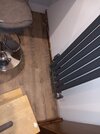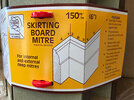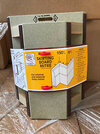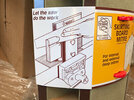Got some radiator pipes (100mm high 30mm wide)I need to box in so was gonna use pendock. (Used once before) 150mm high and 70mm wide. Glue baton floor and plug and screw into wall. Run the pendock an extra metre behind book case to end of wall them run bullnose skirting from there.
Got some mdf beading which needs replacing (used to cover the expansion points of laminate). Shall I pin and glue or just pin and us it too small for shop saw? Use a mitre mate?
gonna use smaller architrave (not stuff currently used).




Got some mdf beading which needs replacing (used to cover the expansion points of laminate). Shall I pin and glue or just pin and us it too small for shop saw? Use a mitre mate?
gonna use smaller architrave (not stuff currently used).






